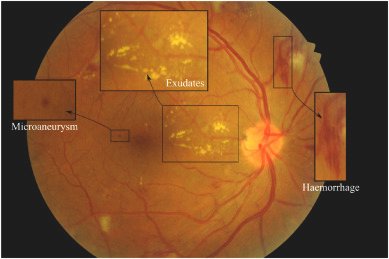- Dotnet
- Machine Learning
- Python
Crop disease diagnosis in agriculture research is crucial. Distinguishing fine-grained crop diseases is essential, as treatment methods vary. We use Image Processing and deep learning to create a system for accurate crop disease identification. Our model, MDFC-ResNet, works across species, coarse-grained, and fine-grained diseases. It incorporates a compensation layer to fuse multidimensional recognition results, outperforming other deep learning models in practical agricultural use.
Module Description
Image Acquisition
Images of crops are captured using cameras or drones.
Preprocessing
The images are preprocessed to remove noise and enhance the features of interest.
Segmentation
The images are segmented into regions of interest, such as leaves, stems, and fruits.
Feature Extraction
Relevant features are extracted from the segmented regions, such as color, texture, and shape.
Classification
The extracted features are used to classify the regions as healthy or diseased using machine learning algorithms
- Agricultural Technology
- MDFC-ResNet Model
- Dotnet
Underwater images often suffer degradation due to factors like light scattering, absorption, and reflection, causing reduced visibility and color distortion. To enhance image quality, It introduces a two-stage dehazing method. estimate the transmission map using the dark channel prior, effectively measuring haze thickness. Then, color correction is applied to restore color balance. By employing a color transfer function and selecting a reference image based on content and lighting similarity, it improve the visual quality and quantitative metrics of contrast and colorfulness in underwater image dehazing, outperforming existing methods.
- Image Processing
- Image Quality Enhancement
- Reference Image Selection
- Dotnet
The Dorsal Hand Vein Recognition project aims to create a secure biometric identification system using the unique vein patterns on the dorsal side of the hand. It employs near-infrared (NIR) imaging for high-quality vein pattern capture. Preprocessing and image segmentation techniques isolate the Region of Interest (ROI), and feature extraction creates a distinct representation stored in a database. During identification, a captured dorsal hand vein image is compared to stored features using a matching algorithm. This non-intrusive, contactless method is less affected by external factors and finds applications in access control, attendance systems, and financial transactions, promising a reliable biometric identification solution.
- Dorsal Hand Vein
- Image Segmentation
- Near-Infrared Imaging
- Dotnet
A method for diabetic retinopathy detection through image processing. Retinal images are enhanced, relevant features extracted via image processing, and a machine learning algorithm trained for classification. The system’s potential benefits include enhanced accuracy and accessibility in healthcare.
- Diabetic retinopathy
- Image Processing
- Machine learning-based diagnosis
A novel technique creates a mosaic image from a secret image, making it appear like a chosen target image. Skilled color transformation ensures nearly lossless secret image recovery. Overflows/underflows are managed by recording color differences in the original space. Embedded information allows lossless secret image retrieval, validated through successful experiments.
- Image Processing
- Information Retrieval
- Steganography
- Dotnet
Deep learning-based chest CT analysis is efficient for COVID-19 diagnosis, but large labeled datasets are scarce. We propose ResNext+, a weakly-supervised approach using volume-level labels, lung segmentation, spatial features, LSTM, and slice attention for slice-level predictions.It shows an 81.9% precision and 81.4% F1 score, which can be further enhanced with image enhancement techniques.
- COVID-19 Diagnosis
- Deep Learning
- Medical Imaging
Deep Learning-based chest Computed Tomography (CT) analysis has been proven to be effective and efficient for COVID-19 diagnosis. Existing deep learning approaches heavily rely on large labelled data sets, which are difficult to acquire in this pandemic situation. Therefore, weakly-supervised approaches are in demand. In this project, an end-to-end weakly-supervised COVID-19 detection approach, ResNext+, that only requires volume level data labels and can provide slice level prediction. The proposed approach incorporates a lung segmentation mask as well as spatial and channel attention to extract spatial features. Besides, Long Short Term Memory (LSTM) is utilized to acquire the axial dependency of the slices. Moreover, a slice attention module is applied before the final fully connected layer to generate the slice level prediction without additional supervision. An ablation study is conducted to show the efficiency of the attention blocks and the segmentation mask block. Experimental results, obtained from publicly available datasets, show a precision of 81.9% and F1 score of 81.4%. It is worth noticing that applying image enhancement approaches improve the performance of the proposed method.
- COVID-19 Diagnosis with ResNext+ Model
- Deep Learning in Chest CT Analysis
- Weakly-Supervised COVID-19 Detection
A graphical password system with a supportive sound signature to increase the remembrance of the password is discussed. In this system a password consists of sequence of some images in which user can select one click-point per image. In addition user is asked to select a sound signature corresponding to each click point this sound signature will be used to help the user in recalling the click point on an image. Users preferred CCP to Pass Points, saying that selecting and remembering only one point per image was easier and sound signature helps considerably in recalling the click points.
- Cued Click Points (CCP)
- Graphical Password System
- Sound Signature for Password Remembrance
A new method is proposed for the region of interest (ROI) extraction using fingertips and finger valley key points. Some new features and a new classifier are proposed based on information set theory. Information set stems from a fuzzy set representing the uncertainty in its attribute / information source values using the information-theoretic entropy function. The new feature types include vein effective information (VEI), vein energy feature (VEF), vein sigmoid feature (VSF), Shannon transform feature(STF) and composite transform Feature (CTF). A classifier called the improved Han man classifier (IHC) is formulated from training and test feature vectors using Frank t-norm and the entropy function. The performance and robustness are evaluated on GPDS and BOSPHORUS palm dorsal vein database under both the constrained and unconstrained conditions.
- Fingertip and Finger Valley ROI Extraction
- Improved Han Man Classifier (IHC)
- Information Set Theory Features
- Dotnet
Data hiding conceals data within cover media, linking two datasets: embedded data and cover media data. In covert comms, hidden data is often irrelevant, while in authentication, it’s closely related. Invisibility is key. Sometimes, data hiding causes irreversible distortion in cover media. In remote sensing and high-energy particle experiments, reversible, lossless, and distortion-free techniques are vital. Reversible data hiding allows message embedding in distortion-free media, like military or medical images, ensuring perfect content restoration. Encryption transforms data into unintelligible content for privacy, typically applied before processing or after decryption.
- Data Encryption for Privacy
- Data Hiding Techniques
- Reversible Data Hiding









